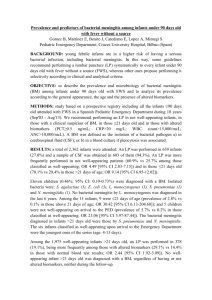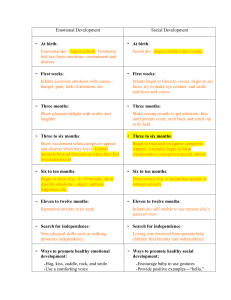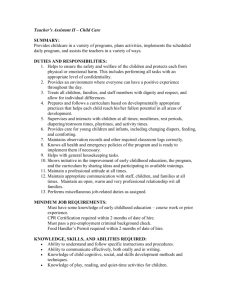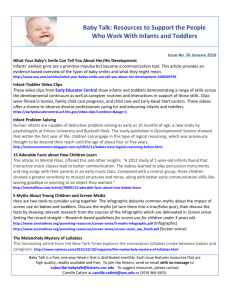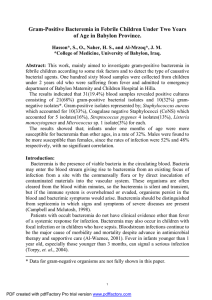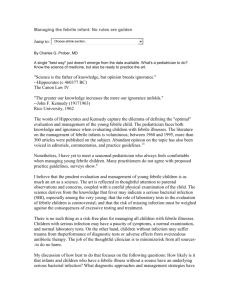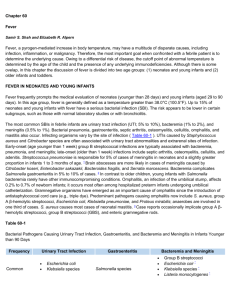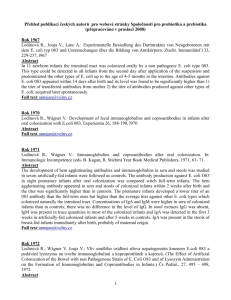Resumen: #413 - EXTRANET - Hospital Universitario Cruces
advertisement
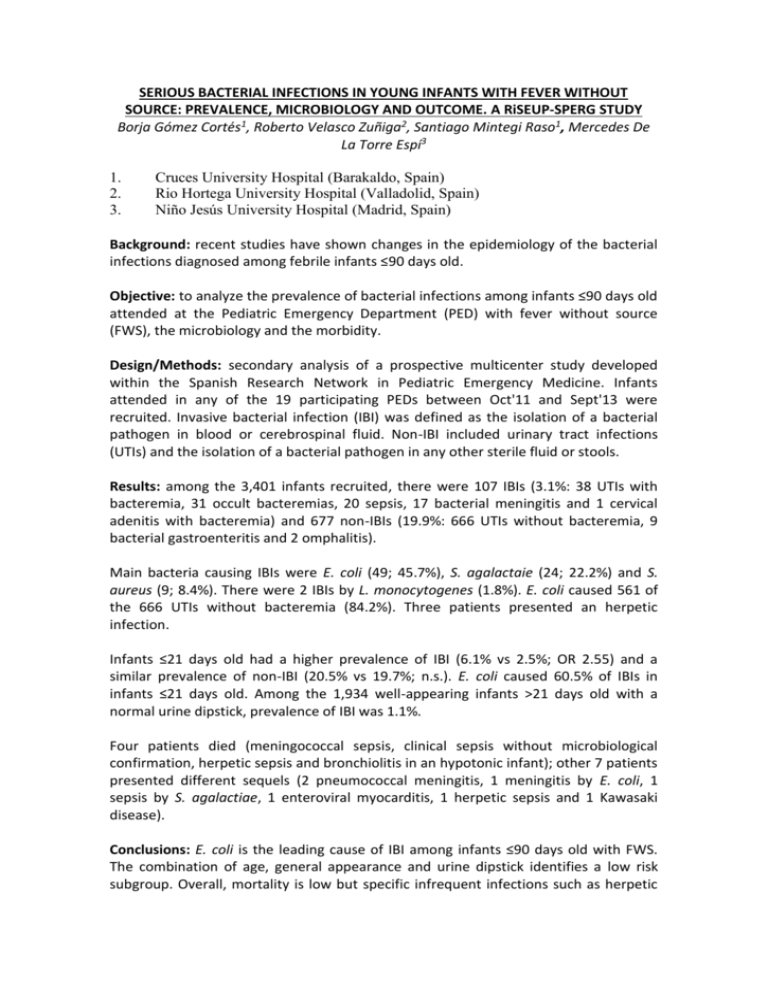
SERIOUS BACTERIAL INFECTIONS IN YOUNG INFANTS WITH FEVER WITHOUT SOURCE: PREVALENCE, MICROBIOLOGY AND OUTCOME. A RiSEUP-SPERG STUDY Borja Gómez Cortés1, Roberto Velasco Zuñiga2, Santiago Mintegi Raso1, Mercedes De La Torre Espí3 1. 2. 3. Cruces University Hospital (Barakaldo, Spain) Rio Hortega University Hospital (Valladolid, Spain) Niño Jesús University Hospital (Madrid, Spain) Background: recent studies have shown changes in the epidemiology of the bacterial infections diagnosed among febrile infants ≤90 days old. Objective: to analyze the prevalence of bacterial infections among infants ≤90 days old attended at the Pediatric Emergency Department (PED) with fever without source (FWS), the microbiology and the morbidity. Design/Methods: secondary analysis of a prospective multicenter study developed within the Spanish Research Network in Pediatric Emergency Medicine. Infants attended in any of the 19 participating PEDs between Oct'11 and Sept'13 were recruited. Invasive bacterial infection (IBI) was defined as the isolation of a bacterial pathogen in blood or cerebrospinal fluid. Non-IBI included urinary tract infections (UTIs) and the isolation of a bacterial pathogen in any other sterile fluid or stools. Results: among the 3,401 infants recruited, there were 107 IBIs (3.1%: 38 UTIs with bacteremia, 31 occult bacteremias, 20 sepsis, 17 bacterial meningitis and 1 cervical adenitis with bacteremia) and 677 non-IBIs (19.9%: 666 UTIs without bacteremia, 9 bacterial gastroenteritis and 2 omphalitis). Main bacteria causing IBIs were E. coli (49; 45.7%), S. agalactaie (24; 22.2%) and S. aureus (9; 8.4%). There were 2 IBIs by L. monocytogenes (1.8%). E. coli caused 561 of the 666 UTIs without bacteremia (84.2%). Three patients presented an herpetic infection. Infants ≤21 days old had a higher prevalence of IBI (6.1% vs 2.5%; OR 2.55) and a similar prevalence of non-IBI (20.5% vs 19.7%; n.s.). E. coli caused 60.5% of IBIs in infants ≤21 days old. Among the 1,934 well-appearing infants >21 days old with a normal urine dipstick, prevalence of IBI was 1.1%. Four patients died (meningococcal sepsis, clinical sepsis without microbiological confirmation, herpetic sepsis and bronchiolitis in an hypotonic infant); other 7 patients presented different sequels (2 pneumococcal meningitis, 1 meningitis by E. coli, 1 sepsis by S. agalactiae, 1 enteroviral myocarditis, 1 herpetic sepsis and 1 Kawasaki disease). Conclusions: E. coli is the leading cause of IBI among infants ≤90 days old with FWS. The combination of age, general appearance and urine dipstick identifies a low risk subgroup. Overall, mortality is low but specific infrequent infections such as herpetic infection or those by bacteria more frequently isolated in older patients (S. pneumoniae, N. meningitidis) are related with a poorer outcome.


